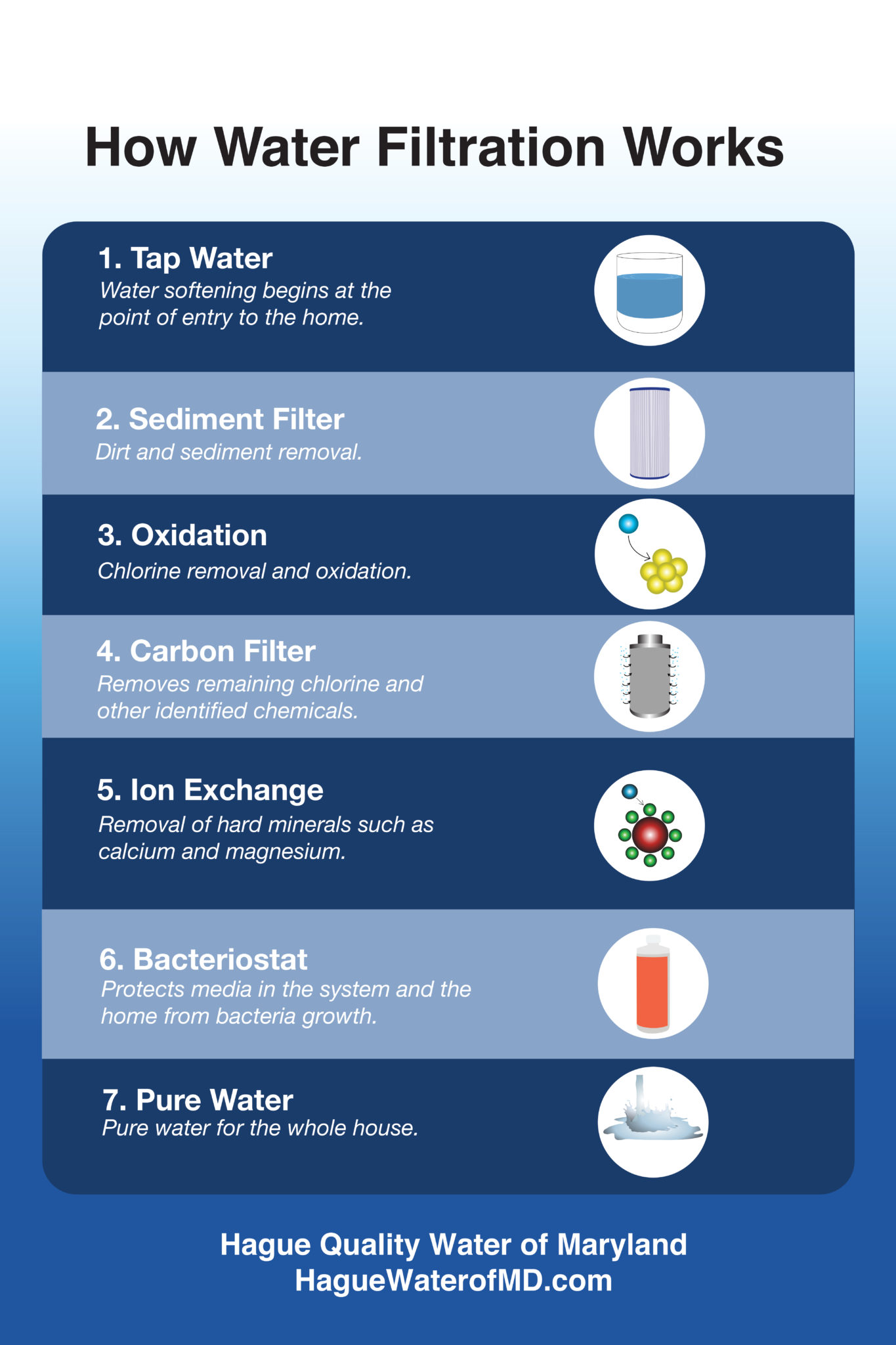If you live in a home with well water, chances are you have a water softener installed in your home. Did you know that water softening is important for some municipal water sources, too? Water softeners are the most popular way to treat hard water and remove contaminants in a residential environment. But, how much do you know about the water softening process? What does your water softener do?
Water softeners remove minerals from water classified as “hard.” This change is accomplished through an ion exchange. The exchange of hard minerals, like calcium and magnesium, for sodium ions is a function of all water softening units. The other processes involved to deliver the best water to your home are where differences found in water filtration units and similar appliances are seen.
While soft water may be your primary objective, a more thorough filtration of your home’s water will lead to better results. Additional filtration is accomplished through several appliances or through a multifunction unit, like Hague’s WaterMax, that does more than soften water and filter sediment.
5 Steps To Water Filtration
Water softening is only a single step of a multi-stage filtration water treatment appliance. Integrating multiple steps to your water softening needs delivers great water! There are 5 primary steps to the traditional water filtration process.
1. Sediment Filtration: As water enters the unit, it passes through a sediment filter. This filter catches sediment as the water is pumped to the next step in the filtration process.
2. Oxidation – Reduction Treatment: A mix of two alloys, copper and zinc, is used in the next filtration step. These substances exchange electrons with chlorine and other contaminants contained in the water to create harmless substances or bond to the media in the unit. The alloy’s antimicrobial properties never deteriorate or deplete. The process also makes carbon filters bacteriostatic, i.e. carbon filtration systems last longer with a smaller chance of bacteria growth.
3. Carbon Filtration: The carbon filtration step removes remaining chlorine in the water. It also reduces a wide array of chemicals, including volatile organic compounds or VOCs. A bed of activated carbon removes impurities using a chemical absorption process.
4. Ion Exchange: The ion exchange process reduces heavy metals and calcium. This step removes calcium, magnesium and other metals that are the primary culprits for hard water. By replacing these metals with low volumes of sodium the water is softened.
5. Bacteriostat: Finally, this last step is necessary to prevent bacteria growth within the unit and the home.
Here’s a quick summary of the process.
All in One
While the process is multi-step, water softening appliances like Hague’s WaterMax are able to complete the entire function within a single unit. This eliminates the need for multiple pieces of equipment and saves space in your home. The water softening process leaves your home with great water.
Enjoy these benefits:
- Eliminates objectionable tastes & odors
- Water-using appliances last longer
- Dishes are cleaner
- Skin and hair are soft and silky
- Food & beverages taste better
- Save time on house cleaning
- Save money on soaps and detergents
Read More: The Science Behind Water Softeners Revealed




